Data Leadership vs. Data Management
Data leadership serves as the strategic compass for organizations, aligning data initiatives with business goals and fostering a culture where decisions rely on data. It emphasizes the people aspect of leadership, inspiring teams to view data as a core asset rather than a technical tool. On the other hand, data management focuses on operational tasks like ensuring data quality, accessibility, and compliance. While data leadership drives vision and strategy, data management ensures smooth execution. Together, they create a foundation for smarter decisions, streamlined operations, and long-term success.
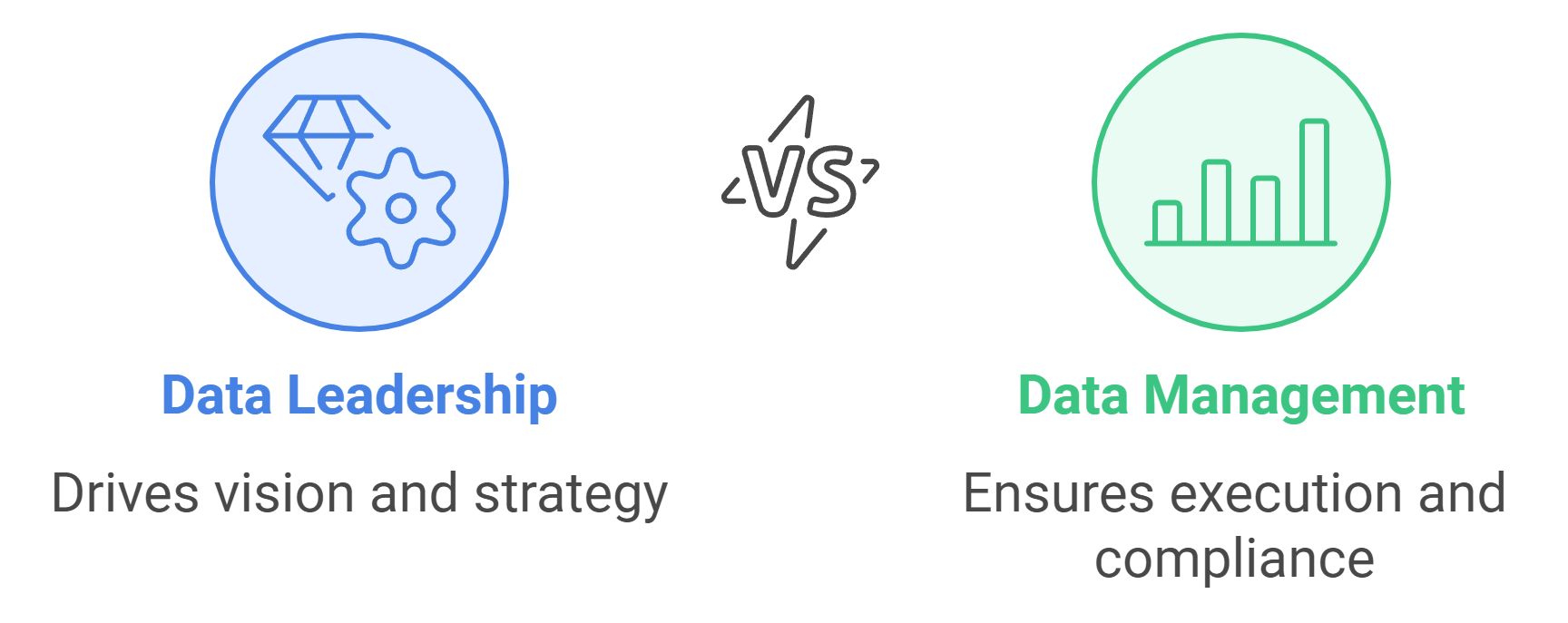
Key Takeaways
Data leadership aligns data initiatives with business goals, transforming data into a strategic asset that drives innovation.
Fostering a culture of data literacy is essential; it empowers teams to make informed decisions and enhances collaboration across departments.
Data management ensures data quality, accessibility, and compliance, forming the backbone of effective decision-making and operational success.
Integrating data leadership and management leads to improved decision-making speed and increased organizational agility.
Data leaders must stay ahead of emerging trends like AI while maintaining ethical data practices to build trust and transparency.
Encouraging collaboration between data leaders and managers bridges strategy with execution, maximizing the impact of data initiatives.
Investing in data literacy training can significantly enhance stakeholder satisfaction and overall organizational effectiveness.
What is Data Leadership?
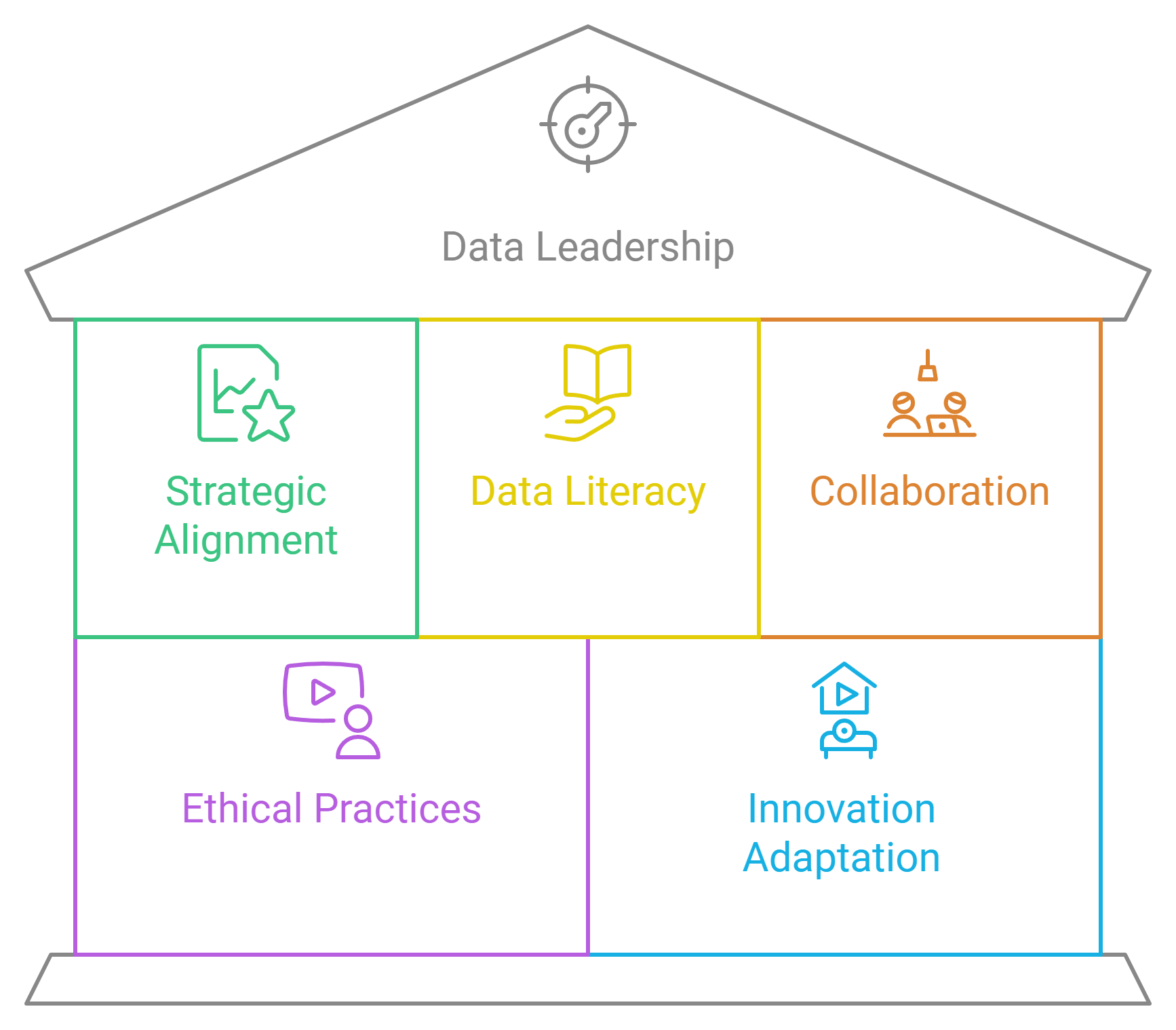
Defining Data Leadership
The role of data leadership in shaping organizational vision and strategy.
Data leadership plays a pivotal role in steering your organization toward success. It focuses on aligning data with your business vision, ensuring that every data initiative contributes to achieving strategic goals. Data leaders act as architects of the future, envisioning how data can create value over the next three to five years. They guide teams to see data not just as numbers but as a transformative asset that drives decisions and shapes the organization's direction.
"Effective data leadership isn't just about handling numbers; it's about transforming data into a core business discipline that drives strategic decisions."
By embedding data into the core of your business strategy, data leaders ensure that data becomes a tool for innovation and growth. This approach helps your organization stay competitive in an ever-evolving market.
How data leadership fosters a culture of data-driven decision-making.
Data leadership goes beyond strategy; it builds a culture where data drives decisions at every level. As a data leader, you inspire trust in data by promoting its consistent use across teams. This trust encourages employees to rely on data for insights, leading to more informed and confident decision-making.
"Leaders need to understand data enough to make their best decisions, drive literacy throughout the organization, and create a culture of trust in data."
Fostering this culture requires you to champion data literacy. When teams understand data, they collaborate more effectively, breaking down silos and ensuring that everyone works toward shared goals. This cultural shift transforms data from a technical resource into a unifying force within your organization.
Goals of Data Leadership
Aligning data initiatives with business objectives to drive outcomes.
The primary goal of data leadership is to align data initiatives with your business objectives. Data leaders ensure that every data project supports the broader mission of the organization. This alignment guarantees that resources are used efficiently and that data efforts yield measurable outcomes.
For example, if your organization prioritizes customer satisfaction, data leaders might focus on analyzing customer feedback to improve products or services. By connecting data initiatives to business goals, you can maximize the impact of your data strategy.
Promoting data literacy and collaboration across teams.
Data literacy is essential for unlocking the full potential of your data. Data leaders prioritize educating teams about data, helping them understand its value and applications. This knowledge empowers employees to use data confidently, fostering a sense of ownership and accountability.
Collaboration also plays a key role. Data leaders encourage cross-functional teamwork, ensuring that data flows seamlessly between departments. This collaborative approach enhances data quality and usability, enabling your organization to make better decisions.
Strategic Role of Data Leadership
Influencing executive decision-making and prioritizing data investments.
Data leaders hold a strategic position within the organization. They influence executive decision-making by presenting data-driven insights that shape policies and priorities. By demonstrating the value of data, you can secure buy-in from leadership and advocate for necessary investments in data management and infrastructure.
Effective data leadership also involves identifying opportunities for growth and innovation. Whether it's adopting new technologies or refining existing processes, data leaders ensure that data remains a cornerstone of the organization's strategy.
Adapting to emerging trends like AI and ethical data practices.
The data landscape is constantly evolving, and data leaders must stay ahead of the curve. Emerging trends like artificial intelligence (AI) and machine learning offer new opportunities for leveraging data. However, these advancements also come with challenges, such as ensuring data security and maintaining ethical practices.
As a data leader, you must navigate these complexities while upholding the integrity of your data. By prioritizing transparency and trust, you can position your organization as a leader in ethical data usage.
"Ethical data practices will become increasingly important, as organizations must prioritize transparency and trust in their data usage."
By embracing innovation and maintaining high standards, data leaders ensure that their organizations remain resilient and adaptable in a rapidly changing world.
What is Data Management?
Defining Data Management
The role of data management in maintaining data quality and integrity.
Data management ensures that your organization’s data remains accurate, consistent, and reliable. By focusing on maintaining data quality, you can trust the information used for decision-making. This process involves identifying errors, eliminating duplicates, and standardizing formats to create a unified and dependable dataset.
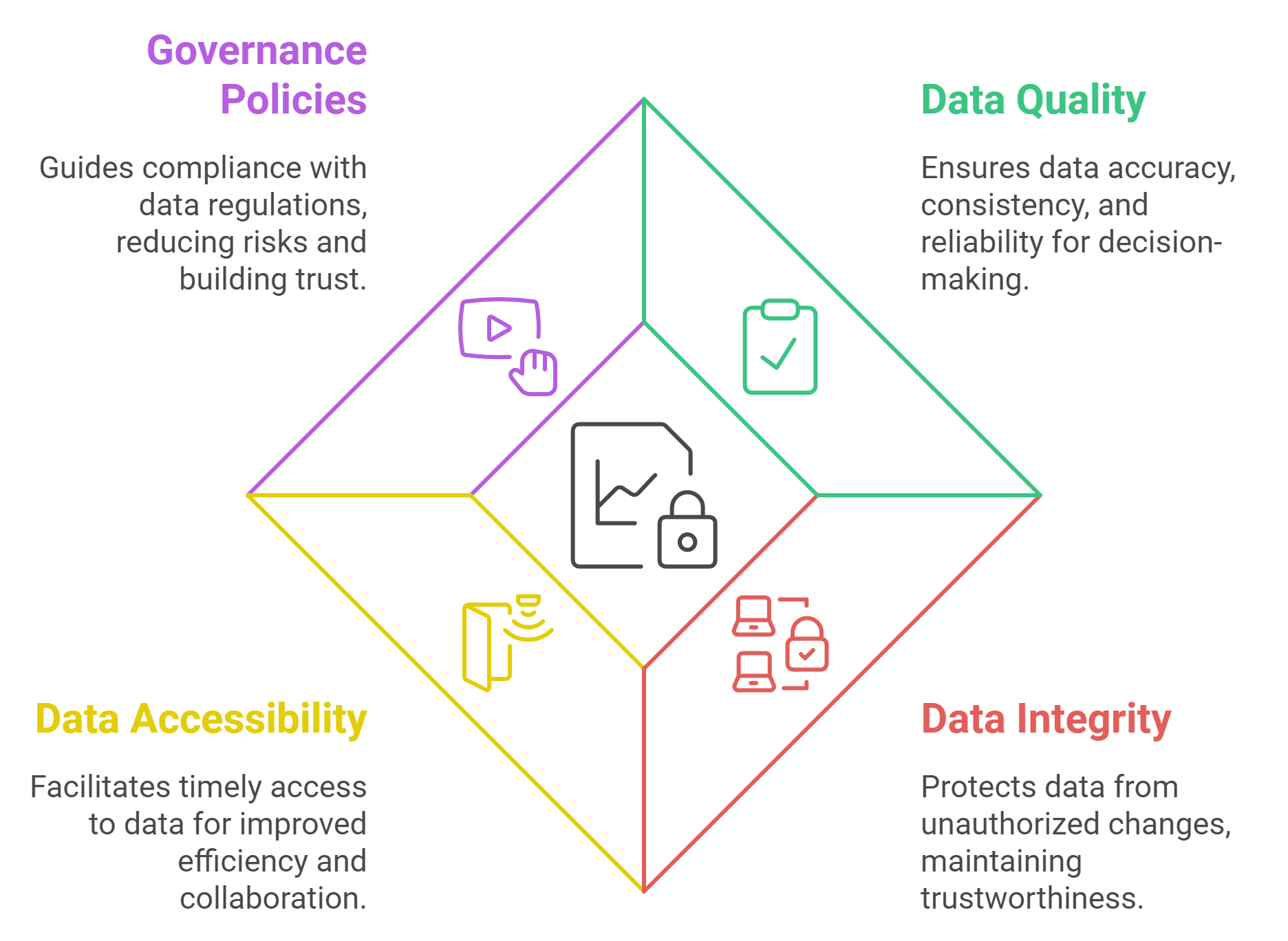
"High-quality data forms the backbone of effective decision-making and operational success." - Mirko Peters
Integrity plays an equally important role. It safeguards your data from unauthorized changes or corruption, ensuring that it remains trustworthy over time. When you prioritize both quality and integrity, you create a solid foundation for achieving your business objectives.
Ensuring data accessibility and compliance with governance policies.
Accessibility ensures that the right people can access the right data at the right time. Data management establishes clear protocols for storing and retrieving information, making it easier for teams to find what they need without delays. This accessibility improves efficiency and supports collaboration across departments.
Governance policies guide how your organization handles data. These policies ensure compliance with regulations like GDPR, CCPA, and PCI DSS, which set strict guidelines for data handling and protection. By adhering to these rules, you reduce risks and build trust with stakeholders.
Goals of Data Management
Establishing robust processes for data governance and security.
Strong processes form the core of effective data management. Governance frameworks define how data is collected, stored, and used, ensuring consistency and accountability. These frameworks also address data security, protecting sensitive information from breaches and unauthorized access.
"Data governance and security are not just operational tasks; they are strategic priorities that safeguard your organization’s reputation and assets."
By implementing robust governance processes, you create a structured approach to managing data while minimizing risks.
Supporting operational efficiency through effective data handling.
Efficient data handling streamlines your operations. When you organize and manage data effectively, you reduce redundancies and eliminate bottlenecks. This efficiency allows teams to focus on their core tasks without being bogged down by data-related issues.
Operational efficiency also extends to decision-making. With well-managed data, you can generate insights faster, enabling your organization to respond quickly to market changes and customer needs.
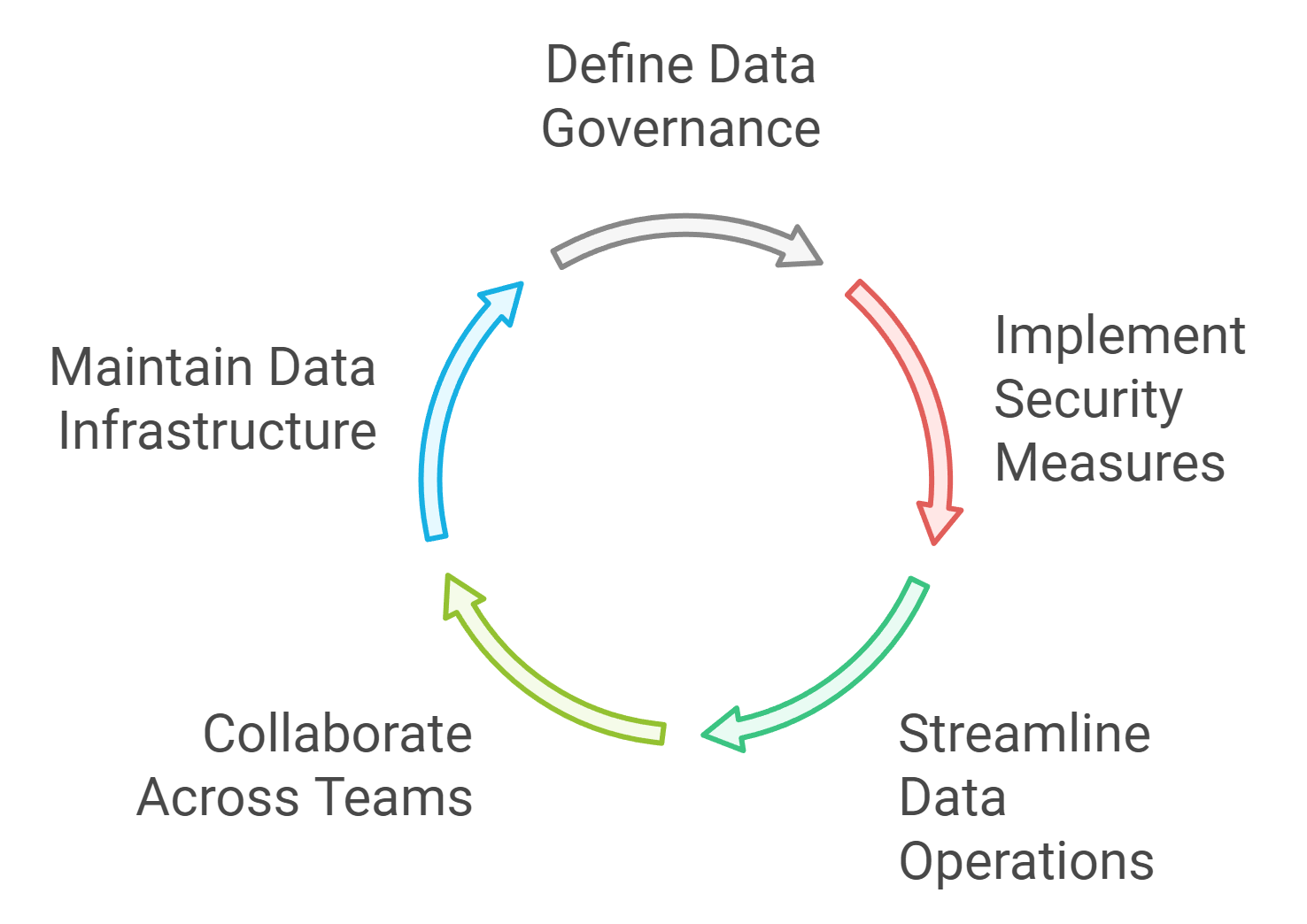
Operational Role of Data Management
Managing data infrastructure, tools, and workflows.
Data management oversees the infrastructure and tools that store and process your data. This includes databases, cloud storage, and analytics platforms. By maintaining these systems, you ensure that your data remains accessible and functional.
Workflows play a critical role in this process. Data management defines how information flows through your organization, from collection to analysis. Clear workflows reduce confusion and improve the overall efficiency of your data operations.
Collaborating with teams to ensure data availability and usability.
Collaboration is essential for effective data management. By working closely with teams, you ensure that data meets their needs and remains usable. This collaboration fosters a shared understanding of data goals and encourages alignment across departments.
"When teams collaborate on data, they break down silos and create a unified approach to achieving organizational objectives."
Availability is another key factor. Data management ensures that information is always accessible to those who need it, empowering teams to make informed decisions without delays.
Key Differences Between Data Leadership and Data Management
Focus and Responsibilities
Strategic focus of data leadership vs. operational focus of data management.
Data leadership emphasizes strategy. As a data leader, you focus on aligning data with long-term business goals. You guide your organization to view data as a strategic asset that drives innovation and growth. This role requires you to think ahead, anticipate trends, and ensure that data initiatives contribute to the broader vision.
In contrast, data management centers on operations. It ensures that data remains accurate, accessible, and compliant with governance policies. Data management involves handling day-to-day tasks like organizing data, maintaining infrastructure, and implementing governance frameworks. While data leadership sets the direction, data management ensures smooth execution.
"Effective data leadership transforms data into a core business discipline, while data management ensures its operational reliability."
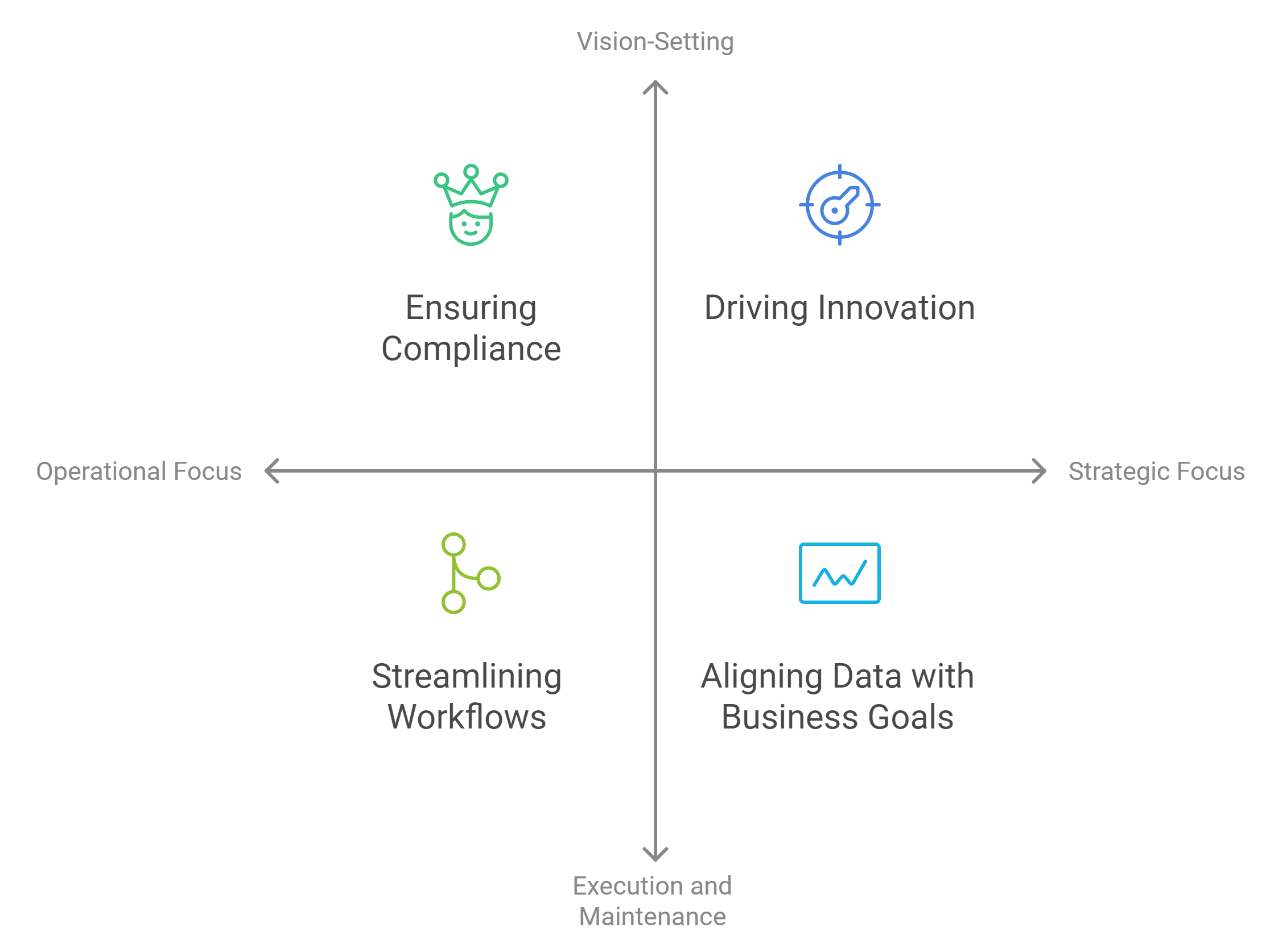
Responsibilities in vision-setting vs. execution and maintenance.
Data leaders take responsibility for vision-setting. You define how data can create value and influence decision-making. Your role involves prioritizing investments, fostering a data-driven culture, and ensuring that data strategies align with organizational objectives.
On the other hand, data management focuses on execution and maintenance. It involves creating workflows, managing tools, and ensuring data quality. Data managers implement governance policies and safeguard data security and compliance. These responsibilities ensure that data remains reliable and usable for all teams.
Impact on the Organization
Data leadership’s role in driving innovation and fostering a data-driven culture.
Data leadership drives innovation by integrating data into strategic decisions. As a data leader, you inspire teams to explore new possibilities and leverage data for competitive advantage. You also foster a culture where data becomes central to decision-making. This cultural shift encourages collaboration and builds trust in data across the organization.
"Data leaders play a vital role in shaping strategy and fostering a culture of trust in data."
By promoting data literacy and encouraging cross-functional teamwork, you ensure that data serves as a unifying force. This approach not only enhances innovation but also positions your organization as a leader in its industry.
Data management’s role in ensuring reliability, compliance, and operational efficiency.
Data management ensures that your organization’s data remains reliable and compliant. By maintaining data quality and adhering to governance policies, you reduce risks and build stakeholder trust. Data management also supports operational efficiency by streamlining workflows and eliminating redundancies.
"Governance and security are strategic priorities that protect your organization’s reputation and assets."
Through effective data handling, data management enables faster decision-making and improves overall productivity. This operational focus ensures that your organization can respond quickly to market changes and customer needs.
Skillsets and Expertise
Leadership, strategic thinking, and business literacy for data leadership.
Data leadership requires strong leadership skills. As a data leader, you need to inspire teams, communicate a clear vision, and drive alignment across departments. Strategic thinking is essential for identifying opportunities and prioritizing investments. Business literacy helps you connect data initiatives to organizational goals, ensuring that data creates measurable value.
Technical, process-oriented, and governance skills for data management.
Data management demands technical expertise. You must understand data infrastructure, tools, and workflows. Process-oriented skills help you establish efficient systems for handling data. Governance knowledge is crucial for implementing policies that ensure compliance and protect data security.
"Data governance and management work together to maximize the value of your organization’s data."
These skills enable you to maintain data quality, safeguard sensitive information, and support the organization’s operational needs.
Why Both Are Essential
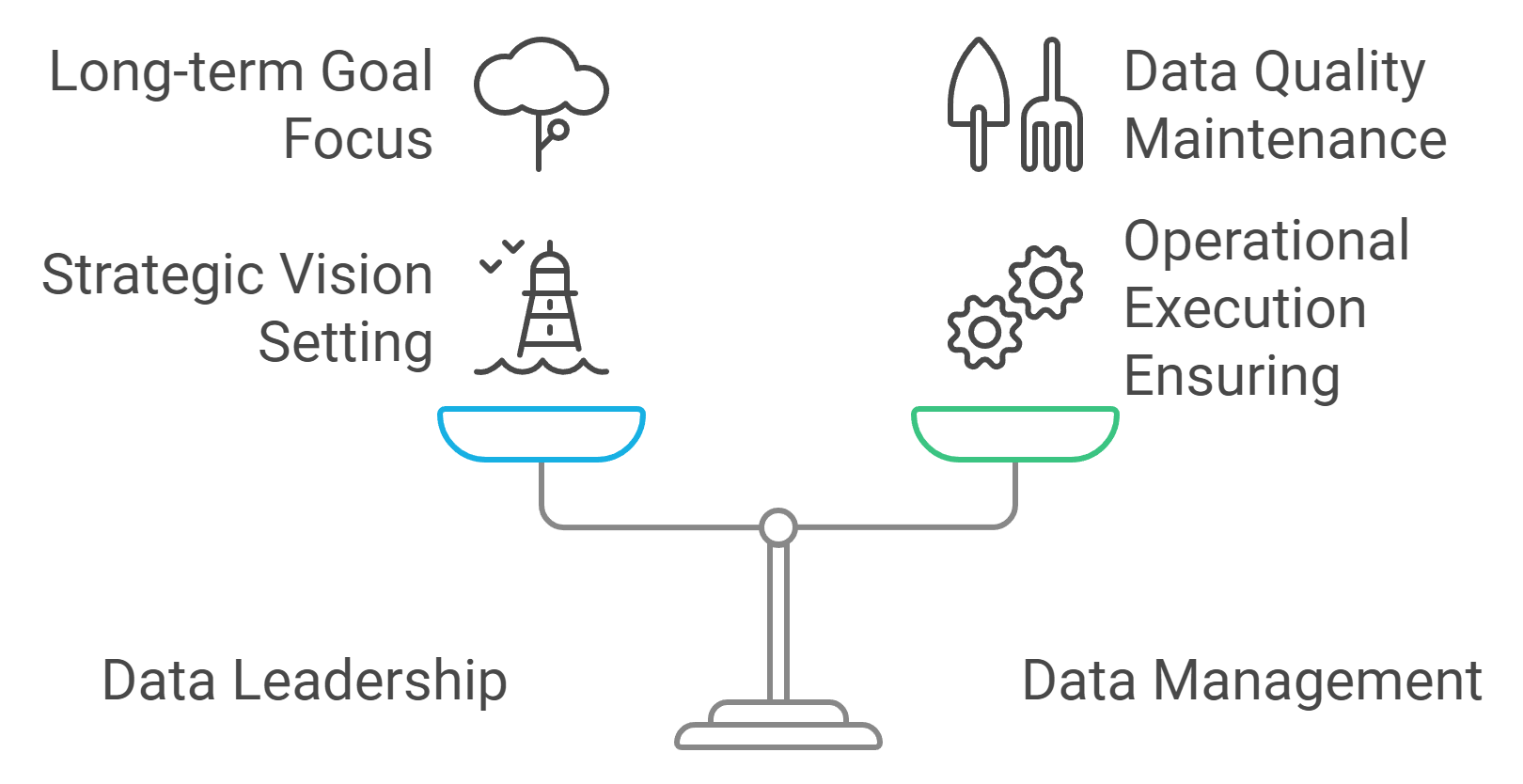
Complementary Roles
How data leadership sets the vision while data management ensures execution.
Data leadership and data management serve as two sides of the same coin, each playing a critical role in a data-driven organization. Data leadership sets the vision by aligning data strategies with business objectives. As a data leader, you focus on long-term goals, ensuring that data initiatives drive innovation and growth. This strategic guidance inspires teams to view data as a transformative asset rather than just a technical resource.
On the other hand, data management ensures the execution of this vision. It handles the operational aspects, such as maintaining data quality, implementing data governance policies, and ensuring data security. By managing workflows and infrastructure, data management creates a reliable foundation for achieving organizational goals. Together, these roles ensure that strategy and operations work in harmony, enabling your organization to unlock the full potential of its data.
"Organizations that integrate data leadership and management report significantly better outcomes, including faster decision-making and increased innovation."
The interdependence of strategy and operations in achieving data-driven success.
The synergy between strategy and operations is essential for achieving data-driven success. Data leadership provides the strategic direction, identifying opportunities for growth and innovation. Meanwhile, data management ensures that the necessary systems and processes are in place to support these initiatives. This interdependence creates a seamless flow from vision to execution, allowing your organization to respond quickly to market changes and stakeholder needs.
For example, data governance frameworks established by data management ensure compliance and consistency, while data leaders use these frameworks to advocate for investments in advanced analytics. This collaboration not only enhances operational efficiency but also positions your organization as a leader in its industry.
"Integrating data leadership and management improves operational performance by positioning data at the core of decision-making and fostering continuous learning."
Benefits of Integrating Both
Improved decision-making through reliable and actionable data.
When data leadership and data management work together, decision-making becomes more effective. Data management ensures that your data remains accurate, accessible, and compliant with governance policies. This reliability allows data leaders to present actionable insights that drive strategic decisions.
Organizations that prioritize this integration report faster decision-making and increased innovation. By combining strategic vision with operational excellence, you can ensure that every decision is backed by trustworthy data. This approach not only reduces risks but also enhances confidence in your organization's ability to adapt and grow.
"High-quality data forms the backbone of effective decision-making and operational success."
Enhanced organizational agility, innovation, and stakeholder satisfaction.
Integrating data leadership and management enhances your organization's agility and innovation. Data leaders identify emerging trends and guide teams to explore new possibilities, while data management ensures that the necessary infrastructure and workflows are in place to support these efforts. This collaboration enables your organization to pivot quickly in response to market demands and technological advancements.
Stakeholder management also benefits from this integration. Reliable data builds trust with stakeholders, while a clear strategic vision ensures alignment with their expectations. Organizations that invest in data literacy training report a 25% increase in stakeholder satisfaction and a 30% improvement in effectiveness. By fostering a culture of collaboration and continuous learning, you can position your organization for long-term success.
"Organizations that integrate data leadership and management report higher engagement, improved decision-making speed, and significant revenue growth."
Data leadership and data management serve distinct yet complementary roles in your organization. Data leadership focuses on aligning strategies with business goals, while data management ensures the operational reliability of data pipelines and systems. Together, they create a seamless flow from vision to execution, enabling smarter decisions and fostering innovation.
To maximize their impact, you must encourage collaboration between data leaders and managers. This alignment bridges strategy with execution, ensuring that data preparation and governance processes support organizational objectives. Assess your current approach, identify gaps, and prioritize data literacy to build a stronger data-driven culture.
"By integrating leadership and management, you unlock the full potential of your data and drive meaningful change."
Take action today. Evaluate your data pipelines, refine your strategies, and embrace both roles to position your organization for long-term success.
See Also
Transitioning From Data Management To Data Leadership
Navigating Obstacles In Effective Data Leadership
Harnessing Data Leadership For Business Growth Today
Synchronizing Data Teams With Organizational Goals
Discovering Powerful Data Leadership Insights From Tris J. Burnes
